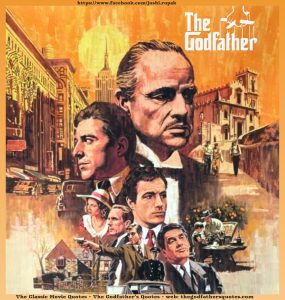
The Godfather remains one of the greatest films ever made, and its influence on cinema, storytelling, and global culture is as powerful today as it was in 1972. When discussing The Godfather movie legacy, critics and filmmakers consistently describe it as a transformative moment in film history. Francis Ford Coppola’s direction introduced a level of emotional depth, visual style, and narrative sophistication rarely seen in crime films before its release. The movie redefined the gangster genre, turning what was once considered pulp entertainment into a high form of cinematic art. Its sepia-toned lighting, slow-burning storytelling, and morally complex characters set the standard for modern crime dramas, establishing The Godfather cinematic legacy as a foundational blueprint for films like Goodfellas, Scarface, and TV shows such as The Sopranos.
Central to this enduring legacy are its unforgettable characters, especially Don Vito Corleone and Michael Corleone. Don Vito, portrayed by Marlon Brando, became the archetype of the noble yet feared mafia patriarch wise, soft-spoken, and bound by loyalty and tradition. His lines, such as “I’m gonna make him an offer he can’t refuse,” are now deeply embedded in pop culture. Meanwhile, the Michael Corleone character analysis reveals one of the greatest transformations in movie history. Michael’s journey from a reluctant outsider to a ruthless mafia boss is often studied in film schools as an example of perfect character arc progression. His evolution symbolizes how power corrupts, making him one of the most influential anti-heroes of all time. Together, Don Vito and Michael created character templates that continue to influence screenwriting, acting, and mafia portrayals in contemporary media.
The cultural influence of The Godfather extends far beyond the screen. The film changed everyday language by popularizing words like “Godfather” as a title for a mafia boss, and the phrase “an offer you can’t refuse” became one of the most quoted lines in entertainment history. The movie also shaped global perceptions of the mafia, with many viewers identifying Italian-American culture and organized crime through the lens of the Corleone family. Fashion trends were equally impacted: the sharp suits, Homburg hats, and elegant tuxedos worn by the characters set new standards for mafia-inspired style. From Hollywood films to hip-hop music and even corporate branding, the The Godfather cultural impact can be felt across generations and continents.
Behind the scenes, the making of the film became almost as dramatic as the story itself, adding another layer to The Godfather movie legacy. According to Francis Ford Coppola film history, the director battled studio pressure, casting disputes, and real-life Mafia interference. Paramount initially rejected both Marlon Brando and Al Pacino, yet their performances became some of the most iconic in cinema. Coppola was nearly fired multiple times, and the production faced threats from Italian-American groups and real mob leaders. Even the famous cat in Don Vito’s opening scene was a spontaneous addition a stray Coppola placed in Brando’s lap moments before filming. These Godfather behind-the-scenes stories highlight how a masterpiece was created through passion, risk, and artistic conviction.
Ultimately, the global legacy of The Godfather continues to grow because it masterfully blends family drama, moral conflict, cultural identity, and power dynamics into one unforgettable narrative. The film’s influence on modern cinema, its richly developed characters, its far-reaching cultural impact, and its dramatic production history have all secured its place as one of the most important works in film history. Whether studied for its direction, appreciated for its acting, or quoted for its iconic lines, The Godfather stands as a testament to storytelling excellence an offer the world continues to accept, decade after decade.





